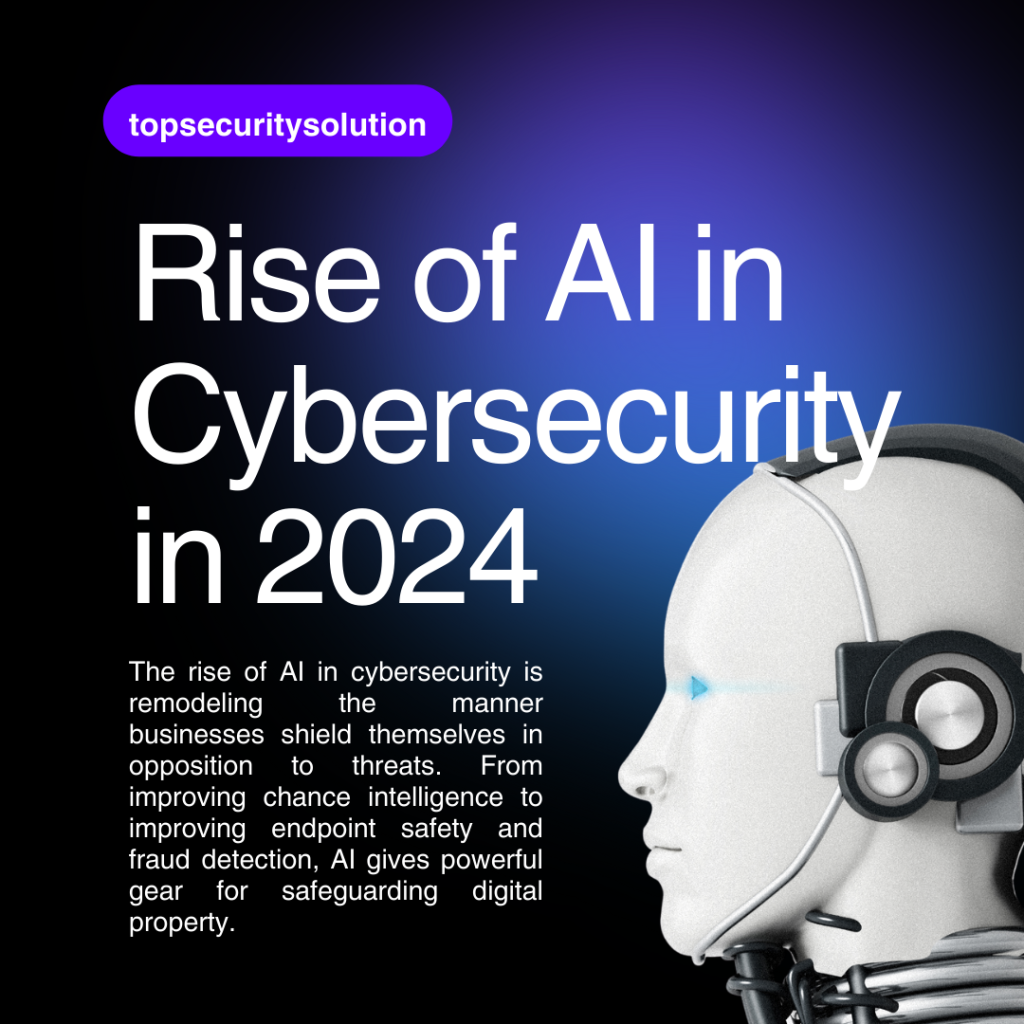Rise of AI in Cybersecurity in 2024

Let’s delve deeper into how AI is revolutionizing cybersecurity, that specialize in unique components and use instances:
1. AI in Threat Intelligence
Threat intelligence involves collecting and reading records on modern and capability cyber threats. AI complements this procedure by means of speedy processing large volumes of facts from numerous resources, along with social media, hacker boards, and news websites. AI algorithms can discover patterns and developments, supplying actionable insights to safety teams.
- Real-Time Threat Intelligence: AI structures can provide actual-time updates on emerging threats, allowing companies to live beforehand of cybercriminals. This consists of detecting new malware strains, monitoring the sports of hacking organizations, and figuring out vulnerabilities being actively exploited.
- Contextual Analysis: AI can add context to uncooked statistics, consisting of correlating seemingly unrelated events to uncover complex attack vectors. For instance, it is able to link phishing emails to domain registrations, highlighting coordinated attacks.
2. AI-Driven User and Entity Behavior Analytics (UEBA)
UEBA uses AI to analyze the conduct of users and devices within a network. By establishing a baseline of regular activity, AI can pick out deviations that could imply a security incident.
- Anomaly Detection: If an worker typically logs in from one place however abruptly accesses the device from a one-of-a-kind us of a, AI can flag this as a capacity safety risk. This capability is crucial for detecting insider threats and compromised money owed【10†supply】.
- Risk Scoring: AI can assign danger scores to users and devices based totally on their conduct, supporting protection groups prioritize responses. For example, a device having access to sensitive records outdoor of ordinary operating hours is probably flagged as excessive risk.
3. Enhanced Endpoint Security
AI plays a big role in endpoint safety, which makes a specialty of protecting man or woman gadgets like computer systems, smartphones, and IoT gadgets.
- Behavioral Analysis: AI-primarily based protection solutions can reveal the conduct of programs and methods on endpoints. They can discover uncommon activities, along with a commonly benign software suddenly trying to get entry to touchy files or community resources.
- Adaptive Security: AI systems can adapt their security measures primarily based at the behavior of threats. For instance, if malware tries to disable the safety software, the AI can dynamically exchange its protection strategy, making it harder for the malware to succeed.
4. AI in Fraud Detection
In sectors like banking and e-commerce, AI is critical for detecting and stopping fraud.
- Transaction Monitoring: AI algorithms can analyze transaction information to discover patterns constant with fraudulent sports, such as uncommon spending conduct or repeated attempts to get admission to money owed. This allows for actual-time fraud detection and prevention.
- Biometric Security: AI complements biometric structures used for authentication, along with facial recognition and fingerprint scanning. By reading diffused functions and behaviors, AI can reduce fake positives and improve the accuracy of those systems.
five. Challenges and Ethical Considerations
While AI offers numerous advantages, it additionally brings challenges and moral concerns:
- Data Privacy: AI systems require big amounts of statistics for education and operation, elevating concerns approximately information privacy. Organizations must make sure that they agree to records protection rules like GDPR and prioritize ethical facts usage.
- Adversarial Attacks: Attackers can use opposed techniques to trick AI fashions, along with by subtly altering inputs to motive misclassification. This highlights the need for strong defenses towards such assaults.
- Bias and Fairness: AI structures can inherit biases present in their training facts, leading to unfair remedy of sure organizations. Ensuring fairness and transparency in AI selection-making is critical.
Conclusion
The rise of AI in cybersecurity is remodeling the manner businesses shield themselves in opposition to threats. From improving chance intelligence to improving endpoint safety and fraud detection, AI gives powerful gear for safeguarding digital property. However, it also calls for careful consideration of moral problems and the capability for hostile assaults.
For similarly reading, explore those topics intensive from assets like Trend Micro, ISACA.
May You Like
Cyber Security Certification and Pay 3022